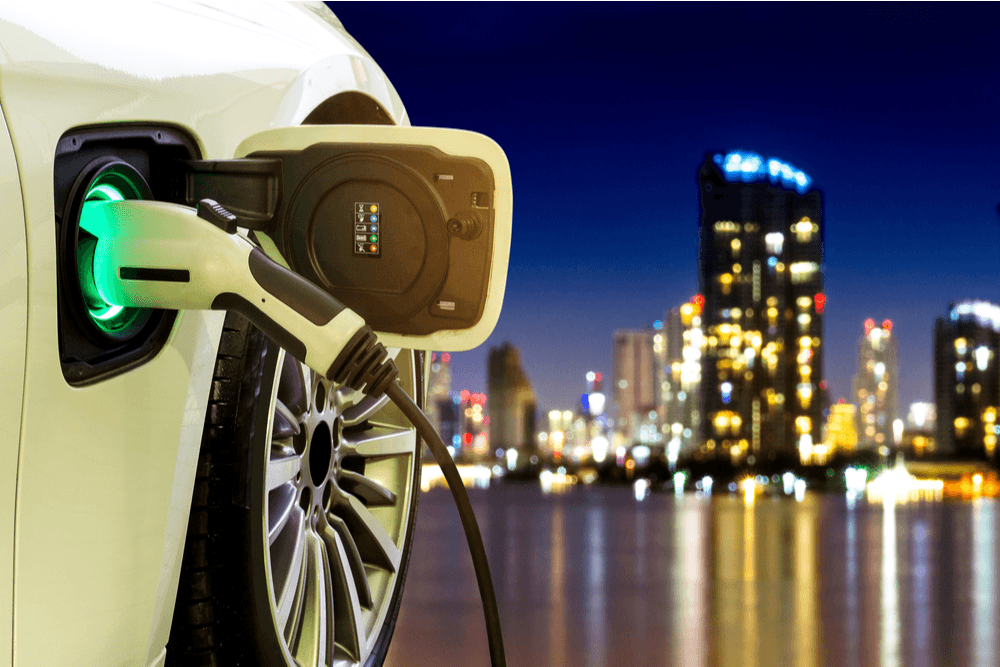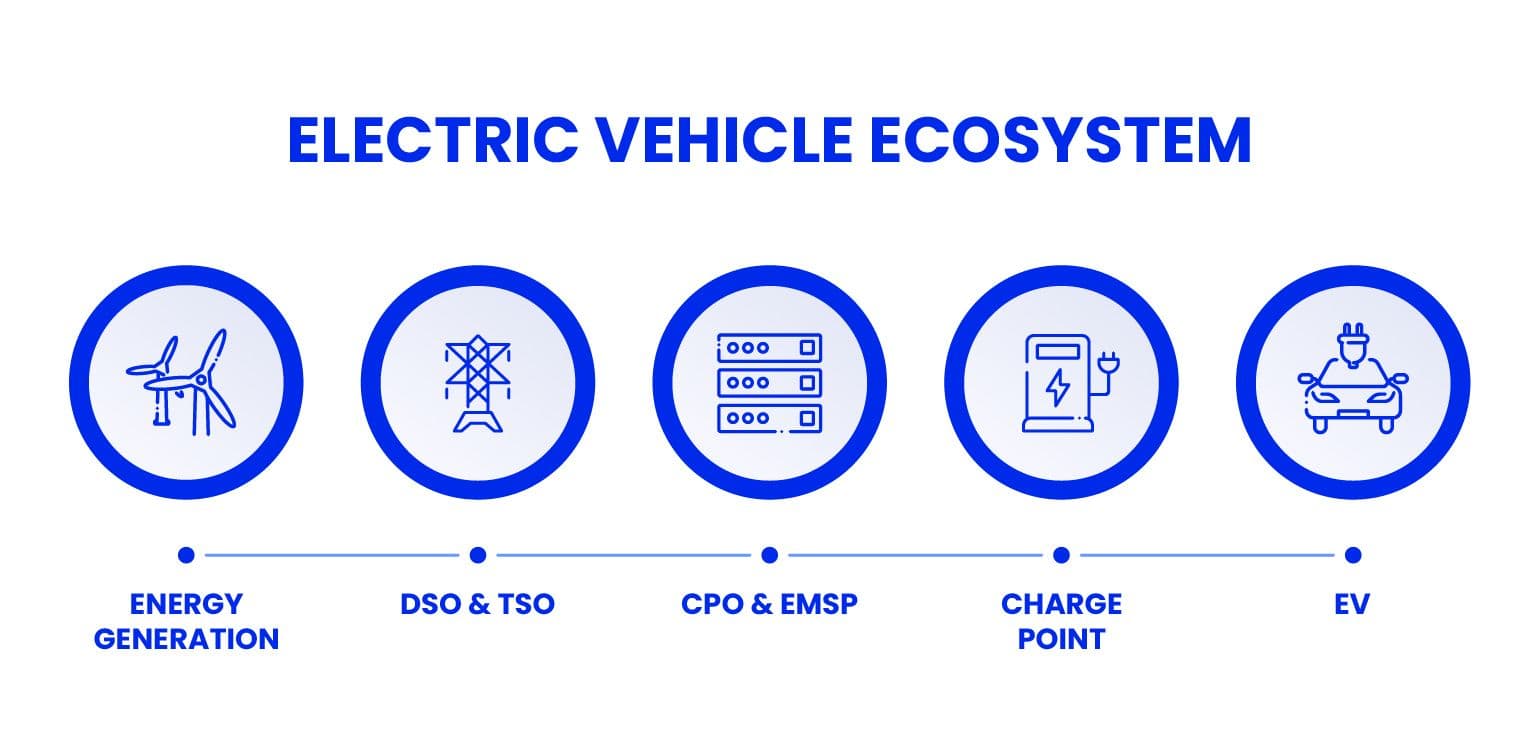Knowing the industry complexity, at Solidstudio, we thought it would be a good idea to launch a series of blog entries on e-mobility fundamentals. The articles are to shed light on some of the topics that may not necessarily be clear to everyone.
CPO vs EMSP - what's the difference?
In the winding paths of e-mobility-related topics, there’s a plethora of terms repeatedly popping up. This comes as no surprise given the industry’s specification, known to no other branches. Understanding the involved technologies and market players requires mapping out tons of complex systems, and it’s all followed by a specific terminology.
The word e-mobility itself can be slightly confusing to some. In fact, it's an umbrella term for service providers, service customers, technology suppliers, and product manufacturers (including software and hardware) that collectively operate within the electric cars business.
Amongst the multitude of positions, professions, and specializations, the most frequently appearing are Charge Point Operators and e-Mobility Service Providers.
Now, what are they, and what’s the difference?
What is an e-mobility service provider?
In short, eMSP is a unit that provides charging services directly to EV drivers and manages the payments for charging sessions. It should be free to say that eMSPs are responsible for the end-user care. They deliver the possibility to locate a charging point, get it to run, and finalize the transaction. It’s also up to them to establish the charging network monetization ( payment methods, adequate tariffs, and real-time billing) and customer satisfaction, ensuring the best client experience. One can say that eMSPs are responsible for ensuring that the CPOs' products are ready to be used by EV drivers.
To facilitate the use of charging stations, eMSP’s usually operate with apps allowing EV drivers to log and conduct a charging session remotely.
EMSP charging management software. EMSP app
As stated above, eMSP’s main role is to serve the end-users, so naturally, the primary software used is the eMSP apps, which are downloadable for EV drivers, preferably from the primary software stores and available for both iOS and Android. They work in such a way that EV drivers can create an account and log in with their unique credentials. Once authorization is granted, the EV user can then locate the nearest charging station (oftentimes also be navigated to it) and facilitate the charging session via the app.
In order to run smoothly, such apps require a bunch of functionalities. It must be taken into consideration that it’s a matter of operating an entire pool of charging points that can come from various CPO’s, while in need of providing a complex service covering all customer’s needs.
Amongst the most necessary functionalities of a properly set up eMSP app, we can differentiate:
- User registration and authentication (login/logout, password reset, T&C’s acceptance, RFID grant, and remote token activation)
- Profound charging experience (charging station search, remote start/stop based on RFID authorization, real-time charging session monitoring)
- Payments (card payments, transaction history stored securely, accountability of adequate taxes, receipt/bill production in real-time)
- Customer experience (easy-to-navigate, intuitive layout, customer service contact info - preferably directly from the app, issue notifications)
- Tariff management (possibility to manage, alter/add/erase end-user and b2b tariffs, reports generation)
- Back-office (user verification and detailed preview, real-time bugs and malfunctions reporting, close monitoring of charging points, data storage for optimization purposes)
You can see the Solidstudio EMSP App here.
What is a Charge Point Operator?
In contrast to eMSPs, Charge Point Operators are responsible for the construction of the charging stations. They are focused on developing and maintaining the charging infrastructure, which includes hardware installation, ensuring proper connectivity of charging points, and their service. CPO’s main point of interest is keeping the technicalities up and running and, if needed, reacting to possible malfunctions in real-time. This is specifically important as a vast majority of charging stations should stay available 24/7.
CPOs also care about the energy management and seamless connectivity to the grid, which includes e.g. energy storage or utilization of renewable sources of energy.
CPO charging management software
Unlike eMSP apps, CPO Platforms operate more on a backend basis. EV-CPO software is, to a great extent, responsible for ensuring that the entire charging station pool runs seamlessly and with no detected malfunctions. Simultaneously, its job is to report in real-time any possible issues, to then generate a data record allowing for avoiding such problems in the future.
The platform should also stay highly scalable, that is for the potential network expansion and for the possibility of connecting to multiple eMSP’s. It is especially crucial now, as the charging network undergoes possibly the greatest growth in history. Ensuring an easy adoption of new technologies is beyond significant. High-level interoperability and scalability can only be achieved when the CPO platform runs following widely accepted industry standards. Here is when open standards integration comes as a must.
Amongst the most necessary functionalities of a properly set up CPO platform, we can differentiate:
- station management (registration of customers, activation and deactivation of charging stations, remote maintenance)
- tariff management (rates management, necessary alterations)
- smart charging (static, dynamic, and renewables, charging profiling, and V2G)
- eRoaming and open standards (scalability with industry requirements)
- customer management (including individual, group, or enterprise management)
- customer support (usually 24/7 with fixed SLA’s)
- dashboard and reporting (for bug fixing, ensured real-time reaction, data storage)
You can see the Solidstudio CPO platform here.
EMSP vs CPO - what’s the difference? In short.
But before that, it has to be mentioned that although there are some principal operational differences, there are a number of companies that combine the roles of EMSPs and CPOs, creating an in-depth, profound e-mobility environment. Such an undertaking allows for complete fleet management from all sides and is known to be quite efficient and effective.
Nevertheless, below you can see a brief summary of the most prominent differences between eMSP’s and CPO’s.
- EMSPs serve the end-users while CPOs take care mostly of the charging stations network and its expansion
- EMSP can be deemed as the frontend of e-mobility operations, while CPO is the backend
- CPOs are to a greater extent responsible for the growth of charging networks, their scalability, and interoperability
- EMSPs are more responsible for the satisfaction of EV drivers and their journeys
- EMSPs are the ones to deliver the apps to EV users that facilitate the charging, while CPOs deliver the chargers themselves
- EMSP’s software is customer-centric, while CPO’s software is more operational


